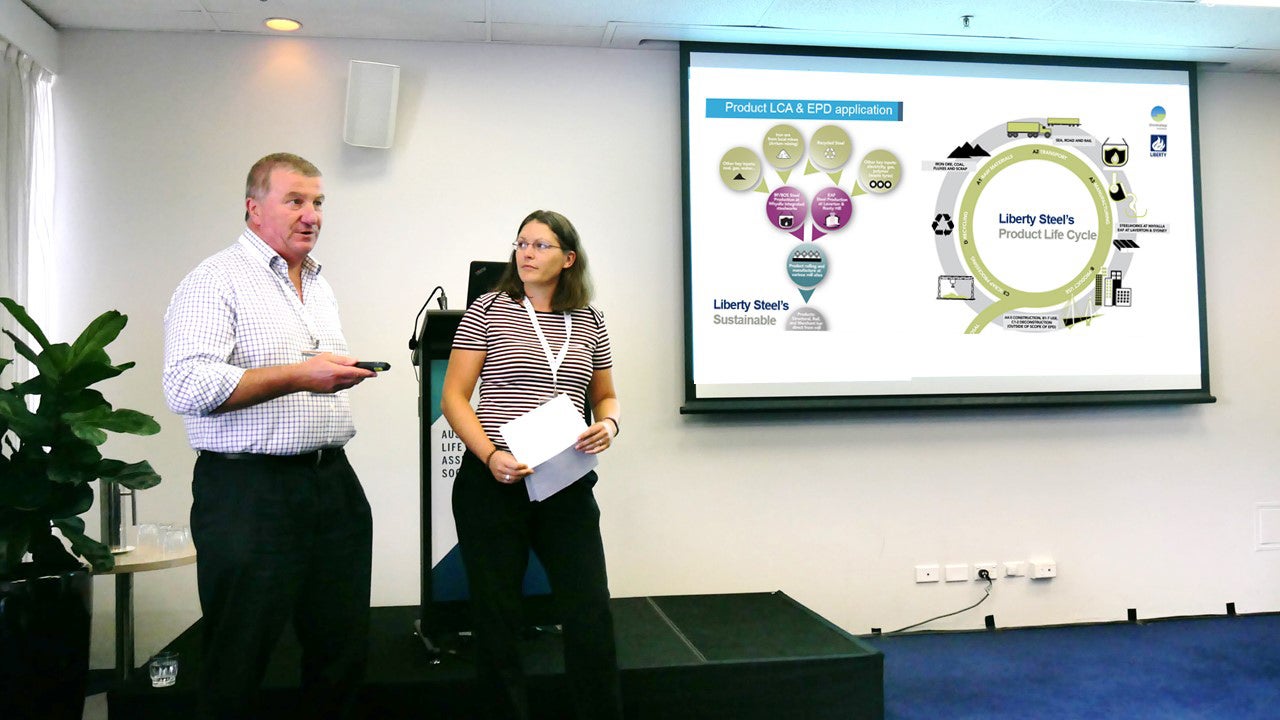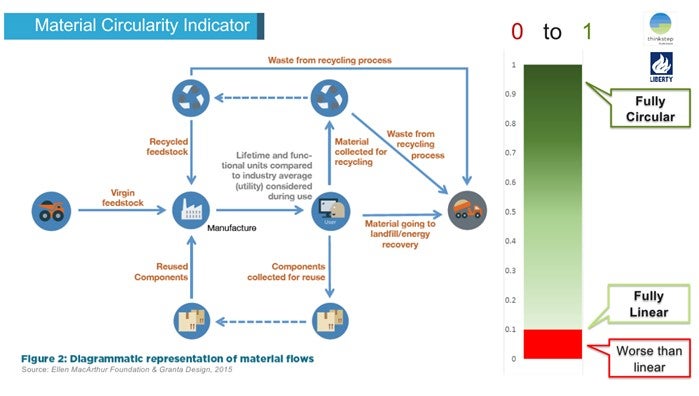
InfraBuild’s Rob Johnson joined forces with thinkstep’s Emily Townsend to demonstrate that the Material Circularity Indicator brings additional value to EPDs to support holistic decision making.
The Circular Economy is a hot topic as it maximises the use and value of materials and helps companies mitigate risks arising from material price volatility and supply.
The Australian Life Cycle Assessment Society’s (ALCAS) recent conference saw sustainability leaders and practitioners sharing a platform and engaging in debate with industry professionals including thinkstep’s Sustainability Engineer Emily Townsend and InfraBuild’s (formerly LIBERTY) Rob Johnson. The theme of the conference was the use of Life Cycle Assessment (LCA) as a central method of environmental assessment and decision making.
While governments are developing Circular Economy policies, and sustainability rating tools such as Green Star and IS promote circular actions, Emily Townsend explains it can be difficult to measure progress or performance.
“The Material Circularity Indicator (MCI) was developed by the Ellen MacArthur Foundation to allow a company to assess how well its products perform in the context of a circular economy and to support more circular design,” she said.
Circularity and InfraBuild’s rebar product
Sustainability software and data specialist thinkstep worked with InfraBuild Steel Centre (formerly LIBERTY OneSteel Metalcentre) to measure the circularity of InfraBuild’s rebar product.
“GaBi, thinkstep’s LCA software tool, allowed us to embed the MCI into an existing LCA that we had created for InfraBuild’s Environmental Product Declarations (EPDs),” Emily says. “It’s important that the results are considered as an additional indicator to those in the EPD to support holistic decision making – Circularity is a useful indicator but shouldn’t be used in isolation.”

InfraBuild’s Rob Johnson explained the value the MCI brings: “The results of the project give InfraBuild a benchmark for our product circularity and identified the key aspects of our operation that affect the result and therefore the opportunities for improvement,” he said. “The project helps provide our team a better understanding of what circular economy means for InfraBuild and our customers. We see considerable potential for the results to be incorporated into our EPDs and our sustainability strategy for the future.”
InfraBuild and thinkstep’s joint presentation explored what might be required to calculate ‘circularity at scale’ for an entire building or infrastructure project. While complex, the more products that have this measure built in along with EPDs, the better the data available for projects to support it. Gaining this early understanding of this measurable indicator for circularity is an important step in InfraBuild’s efforts to support governments and customers as they start to cement their sustainability and Circular Economy strategies.
Please contact us for any feedback or media enquiries about this content.
Subscribe to the
InfraBuild newsletter
Receive regular updates on news, case studies as well as the latest products and services.
